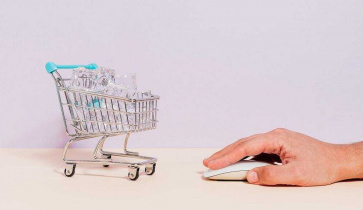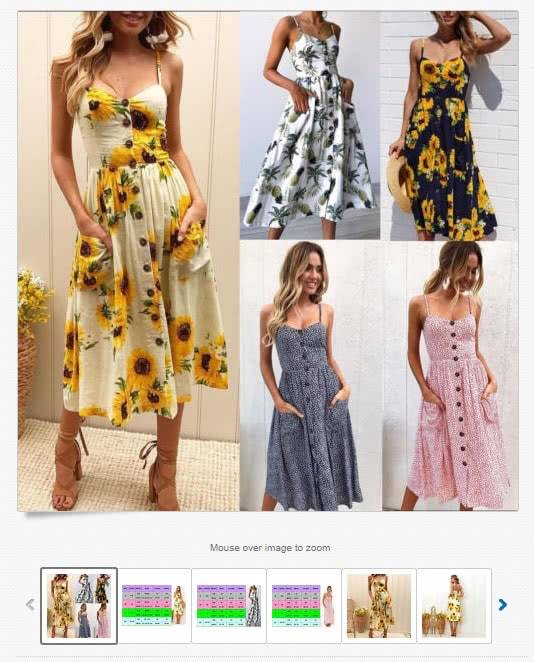
Ecommerce and Retail • Neto

Making the decision to expand your business into other sales channels is a huge step in the evolution and growth of your enterprise. While it isn’t something to be taken lightly, a little research and knowledge will go a long way toward not just making the decision but also making a success of it.
Marketplaces like eBay, Catch and Amazon Australia and shopping engines like Google Shopping are proving to be a highly successful strategy for many retailers.
eBay is what we refer to as an online marketplace. A place where buyers and sellers can trade almost anything. It’s a channel for both individuals and businesses that originally started life as an auction house for collectables.
While it still has a reputation for unique items and pre-loved goodies it’s also the marketplace for savvy business owners (and shoppers!).

With a history in Australia dating back to 1995, it’s no wonder eBay welcomes 7.8 million Australian shoppers to its pages each year. And this kind of reach makes it a market leader in the region. The set up process is relatively straightforward with few stringent policies to get new businesses in trouble, plus you can choose between fixed price and auction listings. One of our favourite features is the fact that you can set up your own online store within eBay, which really assists in building brand awareness. In terms of cashflow, eBay pays you daily through their payment gateway PayPal. Let’s hope that doesn’t change with eBay due to replace PayPal with new player Adyen, over the coming years.
eBay selling fees for Australia really depend on how much you're selling. Store fees vary greatly depending on the package you select but you can get up and going from as little as $24.95 per month for a basic package. Insert fees range from $0.20 to $1.00 for sale listings or $3 for an auction listing. You’ll also pay a final value fee of 6-9.5% and a PayPal transaction fee of 2.6%.
Before you even set your store up, we suggest actually buying a few items online from eBay. See how it works, the steps you have to go through, the communications you receive and the after-purchase follow up. You’ll be amazed at how much you learn.
Then it’s time to get going. eBay makes it as easy as possible for sellers with an entire section of their website dedicated to and selling basics. From creating an eBay seller account and using My eBay to creating a listing and using the seller dashboard, it’s all available in bite-sized, easy to digest chunks of information.
Once you’ve mastered the basics, it’s time to create your eBay Store. You can design it to reflect your actual business, and lay out your inventory in a way that suits you. If you’re a Neto merchant, you can list items, create rules, receive payments, ship orders and most importantly keep track of inventory on eBay right from within your Neto retail management platform, with no double handling. Neto also allows you to schedule listings for later publication and manage multiple eBay stores.
Although we briefly mentioned ‘listing items’ in our previous point, there really is an art to creating a listing that keeps eBay happy, makes your product look attractive and generates interest (and action) from your potential buyers. Here’s four things to pay attention to when creating a listing.
1. Research: Start by viewing listings for similar products. This will help you decide on the category, or categories, that best suit and whether a fixed price or auction listing is the way to go. And you’ll no doubt pick up ideas on how to create a great listing of your own.
2. Maximise your title: You’ve got 80 characters for your listing title so make the most of them by using keywords, brands, colours, models and sizes.

3. Images are everything: 12 free photos are included in every listing, so invest in professional photography if you can and display your product from every angle. White backgrounds work best but it’s also nice to include a couple of in situ images for pure inspiration and don’t forget the close-up, so shoppers can see all the details. Whatever you do, don’t pull photos from other websites, it’s illegal and can get you banned from eBay.

4. Content is king: Take the time to write (and then proof and edit) your product description with as much relevant detail as possible including precise measurements. And don’t forget formatting – headings and bulleted lists always work well. If possible also add your UPC or ISBN number so that you’ll be found in searches (on and off eBay).
5. Automate: If you are doing multiple listings for multiple products and variations at once, we have one word for you - automate! In Neto you can set up Listing rules templates which specify all of your preferred settings to list products to eBay, like whether you want the listing to be fixed price or auction, and what duration you want it to run for, for example. This makes it quick and easy to apply the same settings to many products at once.
Once you start selling on a marketplace as well as your ecommerce store or physical store, all of a sudden you're going to have multiple sets of inventory to worry about, and the last thing you want to do is run out of stock and miss out on potential sales. Having visibility over your stock across all of your sales channels and warehouses, with real-time updates is critical to running a streamlined operation. A good inventory management system that integrates with or is part of your retail platform will allow you to do this, helping you to see how much stock you have at any one time, set stock buffers so that you don't run out, and re-order before you're scraping the bottom of the barrel.
eBay rates its sellers on a monthly basis, and to gain credibility and trust for your business, you need to be a Top Rated seller. There are a few minimum standards covering the length of time you’ve been on eBay and the number and value of transactions you’ve made, as well as adherence to eBay’s policy, but here are the important ones you really need to focus on:
Neto customers Kick Push and Hooked Online have both made the successful step into selling on eBay so take some time out to read and listen to their stories or check out the video below. And when it’s time to take your business to the next level, Neto is your ideal partner.